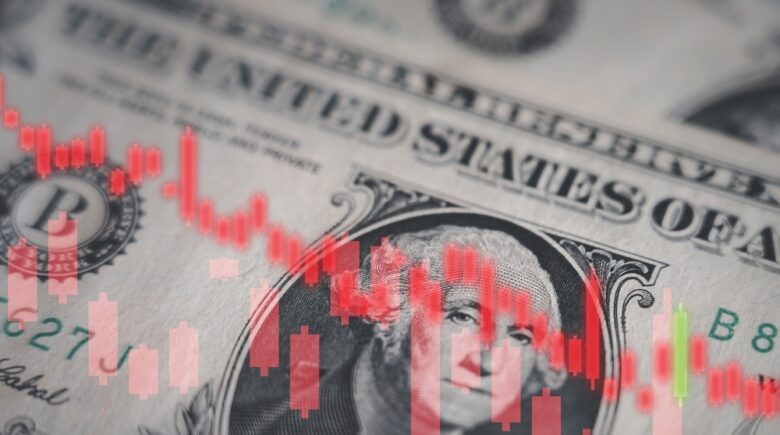Economic uncertainty doesn’t announce itself with fanfare. One day you’re scrolling through your favorite apps, and the next, there’s a government shutdowna and headlines scream about market volatility and potential recessions.
For millennials who’ve already weathered the 2008 financial crisis and the pandemic-induced economic chaos, the thought of another downturn feels exhausting. Yet preparing your finances for economic slowdowns isn’t about panic—it’s about smart, proactive planning that gives you control when the world feels unpredictable.
The good news? You don’t need a finance degree or a six-figure salary to recession-proof your money. What you need is a solid strategy that combines old-school wisdom with modern digital tools. From building emergency cushions to making strategic investment decisions, the steps you take today can mean the difference between weathering a storm and getting swept away by it. This guide breaks down practical, actionable steps that work for real people with real budgets, helping you build financial resilience before the next economic slowdown arrives.
Why Your Emergency Fund Is Your First Line of Defense
Think of your emergency fund as financial body armor. When layoffs start happening or unexpected expenses pop up, this money keeps you afloat without derailing your long-term goals. Financial experts typically recommend saving three to six months of living expenses, but that number should flex based on your situation. If you’re a freelancer or work in a volatile industry, aim for six to nine months. Traditional employees with stable jobs might start with three months and build from there.
The psychology of having an emergency fund matters just as much as the money itself. Knowing you have a cushion reduces financial anxiety and prevents panic-driven decisions during tough times. You won’t need to rack up credit card debt or liquidate investments at the worst possible moment. This fund isn’t about getting rich—it’s about buying yourself options when circumstances change.
Digital banking has revolutionized how we build these funds. High-yield savings accounts now offer interest rates that actually mean something, often 4-5% APY compared to traditional banks’ measly 0.01%. Apps like Marcus by Goldman Sachs, Ally Bank, and CIT Bank make it easy to automate transfers and watch your emergency fund grow without lifting a finger. The key is keeping this money separate from your checking account but accessible enough to tap within a day or two.
Strategic Saving in the Digital Age
Building an emergency fund feels overwhelming when you’re living paycheck to paycheck. Start small. Even $25 per week adds up to $1,300 in a year. The “pay yourself first” principle works because it treats savings like a non-negotiable bill. Set up automatic transfers on payday, before you have a chance to spend that money elsewhere. Your brain adjusts to living on what’s left, making the sacrifice feel less painful over time.
Fintech apps have gamified saving in ways that actually work. Apps like Qapital and Digit analyze your spending patterns and automatically squirrel away small amounts you won’t miss. Some round up purchases to the nearest dollar and save the difference. Others use AI to determine when you can afford to save more. These micro-savings might seem trivial, but they leverage behavioral economics to build habits that stick.
Consider diversifying where you keep emergency funds. While most should sit in a liquid, FDIC-insured savings account, you might park a portion in a money market fund or short-term Treasury bills for slightly better returns. Just ensure you can access the money quickly without penalties. The Consumer Financial Protection Bureau emphasizes keeping emergency funds separate from investment accounts to avoid the temptation of dipping in during market upswings or the pain of forced withdrawals during downturns.
Don’t Abandon Your Long-Term Strategy
Market volatility makes everyone nervous. Your portfolio drops 15% in a week, and suddenly selling everything feels rational. It’s not. History shows that investors who panic-sell during downturns lock in losses and miss the eventual recovery. The S&P 500 has weathered every recession in history and come back stronger. Time in the market beats timing the market, especially for millennials with decades until retirement.
That said, recessions do require strategic adjustments. Review your asset allocation to ensure it matches your risk tolerance and timeline. If you’re 30 years from retirement, you can weather more volatility than someone five years out. Most financial advisors suggest a diversified portfolio that includes stocks, bonds, and alternative investments. The traditional 60/40 stock-bond split has evolved as younger investors explore REITs, commodities, and even cryptocurrency as hedge options.
Dollar-cost averaging becomes your best friend during uncertain times. Instead of trying to time the bottom, invest consistent amounts regularly. When prices drop, your money buys more shares. When they rise, you benefit from the appreciation. Robo-advisors like Betterment and Wealthfront automate this process, rebalancing your portfolio and maintaining your target allocation without emotional decision-making. They’ve democratized sophisticated investment strategies that once required expensive financial advisors.
Defensive Positions and Opportunity Hunting
Certain sectors historically perform better during recessions. Consumer staples, healthcare, and utilities tend to hold steady because people still need food, medicine, and electricity regardless of economic conditions. Shifting some portfolio weight toward defensive stocks doesn’t mean abandoning growth entirely—it means acknowledging reality and adjusting accordingly. Index funds focusing on dividend-paying companies provide both stability and income during turbulent periods.
Recessions also create buying opportunities for patient investors. Quality companies often see their stock prices hammered despite solid fundamentals. If you’ve maintained your emergency fund and kept your job, market downturns let you buy assets at discount prices. Warren Buffett famously said to be “fearful when others are greedy and greedy when others are fearful.” This contrarian approach requires nerve, but it’s how wealth gets built over generations.
Tax-loss harvesting becomes particularly valuable during market declines. You can sell investments at a loss to offset capital gains, reducing your tax bill while repositioning your portfolio. Robo-advisors automate this process, scanning for opportunities daily. The IRS allows you to deduct up to $3,000 in net capital losses against ordinary income annually, with excess losses carrying forward to future years. This strategy turns market pain into a small silver lining come tax season.
Protecting Your Digital Financial Identity
Economic uncertainty brings out scammers like sharks smelling blood. Phishing attempts spike during recessions as criminals exploit fear and confusion. Protecting your financial accounts requires vigilance. Enable two-factor authentication on every financial app and account. Use unique, complex passwords—or better yet, a password manager like 1Password or Bitwarden to generate and store them securely.
Monitor your accounts obsessively during uncertain times. Most banks and credit card companies offer real-time alerts for transactions. Set them up. The faster you catch fraudulent activity, the easier it is to resolve. Check your credit reports regularly through AnnualCreditReport.com, which provides free reports from all three bureaus. Identity theft often goes unnoticed until significant damage occurs, so proactive monitoring matters.
The shift toward digital financial services offers convenience but creates new vulnerabilities. Research any fintech platform before linking your bank accounts. Verify they use bank-level encryption and are FDIC-insured where applicable. Read privacy policies to understand how your data gets used and shared. The Consumer Financial Protection Bureau maintains resources about digital financial services and your rights, helping you navigate this evolving landscape safely.
Recession-proofing your finances isn’t about predicting the future—it’s about preparing for multiple possible futures. The steps outlined here won’t make you immune to economic downturns, but they’ll give you resilience when challenges arrive. Building an emergency fund, maintaining a diversified investment strategy, and protecting your digital financial identity form the foundation of financial security in uncertain times. These aren’t revolutionary concepts, but they work because they’re grounded in decades of economic history and human behavior.
The millennial generation has already proven remarkably adaptable through multiple crises. You’ve embraced digital tools, questioned traditional financial advice, and built wealth differently than previous generations. Use that adaptability now to implement these strategies before the next recession hits. Start small if you must, but start today. Your future self—the one navigating the next economic storm—will thank you for the preparation you’re doing right now.
References
- Consumer Financial Protection Bureau. (2024). “Managing Your Money During Economic Uncertainty.” https://www.consumerfinance.gov/
- NerdWallet. (2024). “Emergency Funds: What They Are and Why They Matter.” https://www.nerdwallet.com/
- Yahoo Finance. (2024). “Recession-Proof Investment Strategies for Long-Term Growth.” https://finance.yahoo.com/

